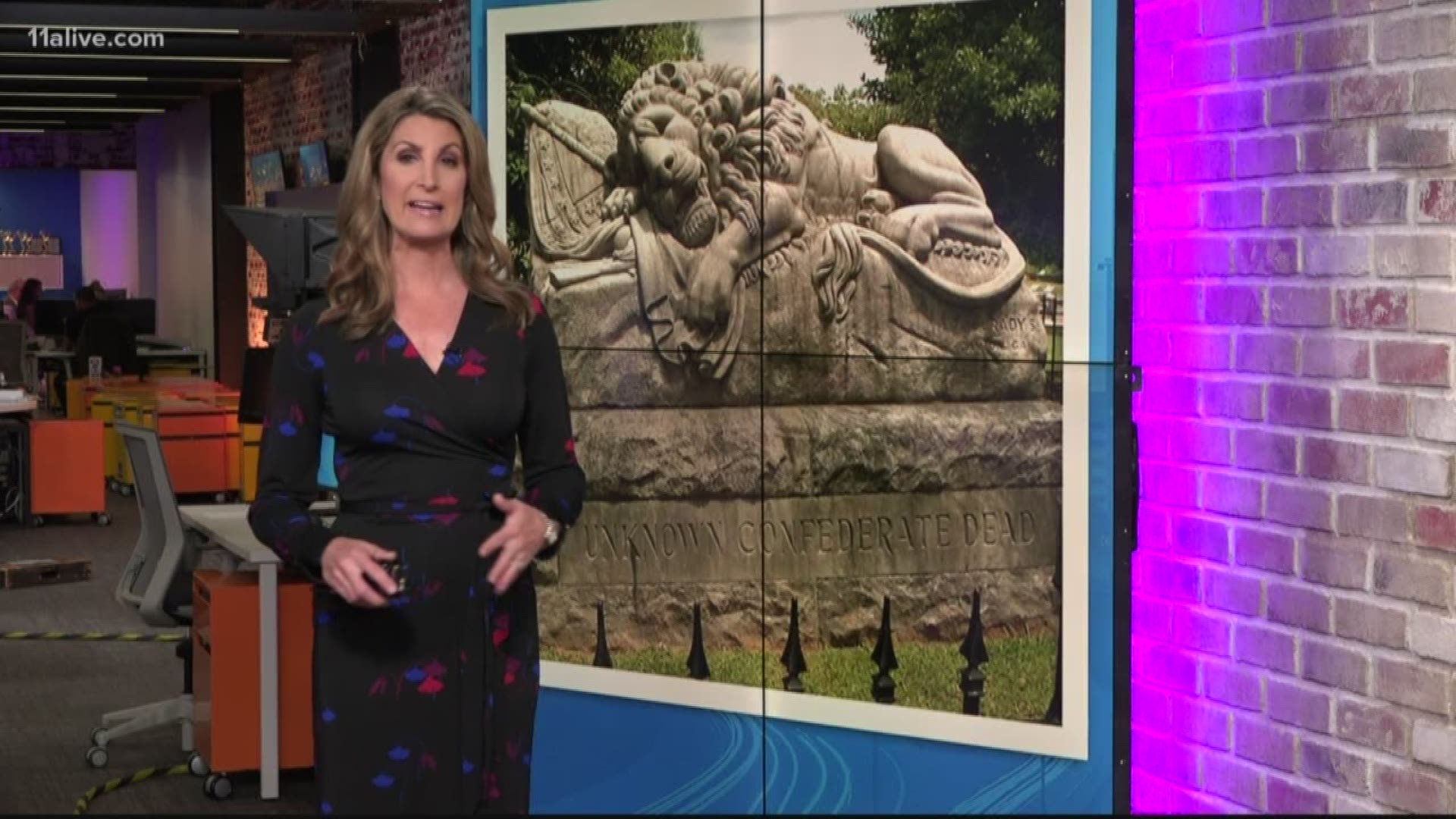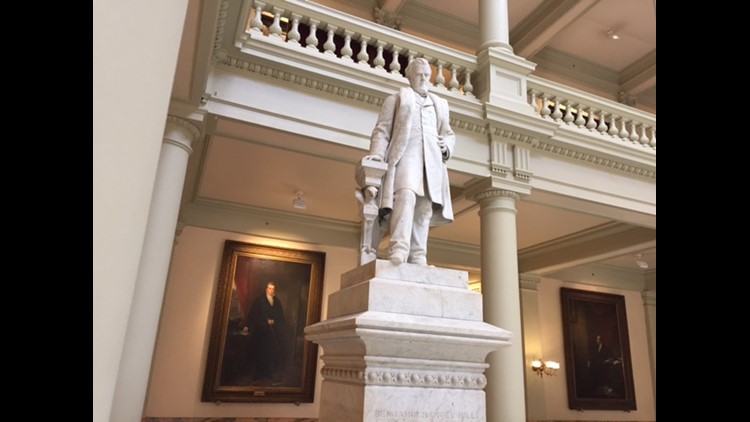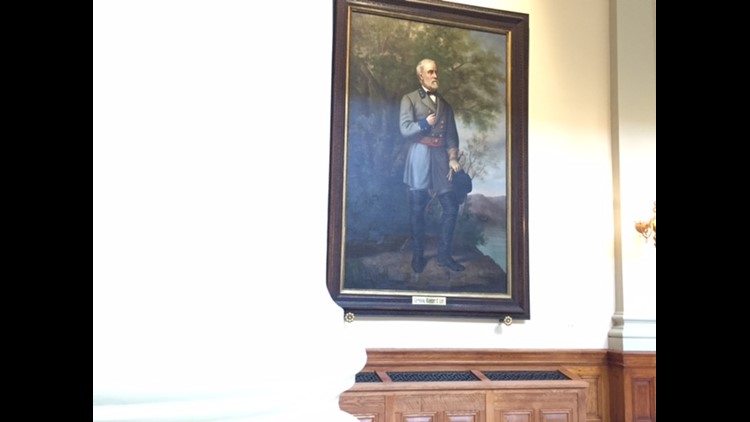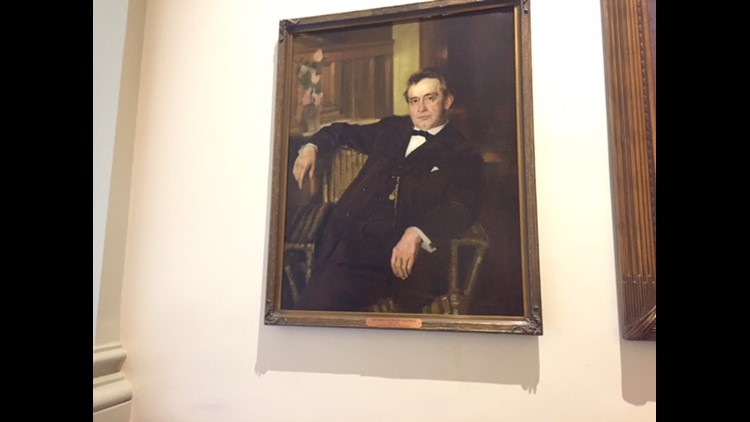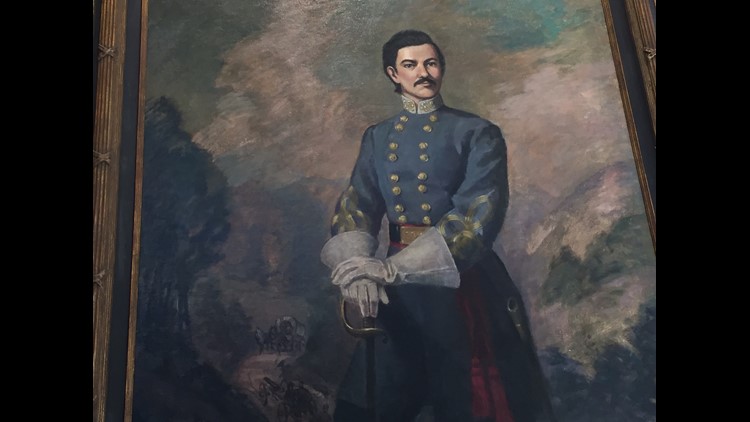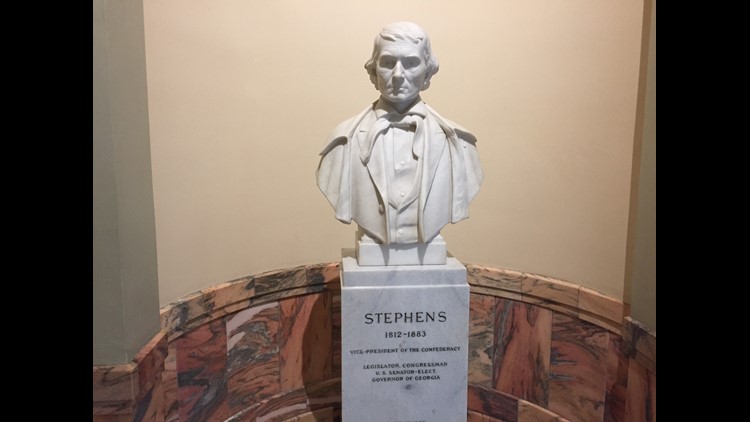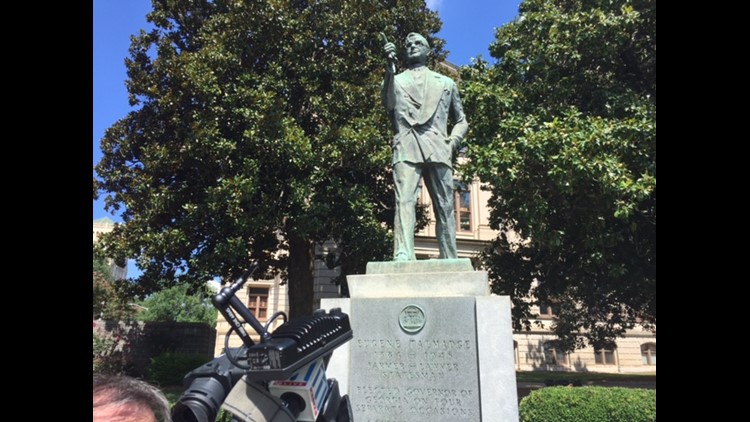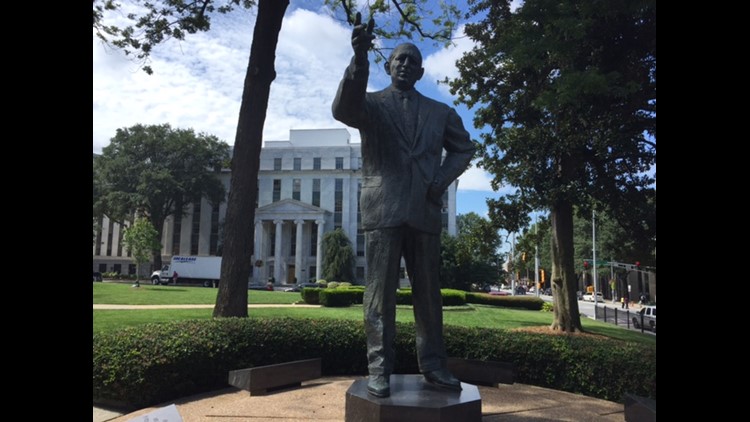ATLANTA — Atlanta will soon add some vivid lessons about the South's racist history on markers placed next to four historic monuments amid the ongoing national debate over Confederate statues.
The first of the panels could be installed as early as Friday, officials said.
In Atlanta's Piedmont Park, the 1911 Peace Monument commemorating post-Civil War reconciliation will get context noting that its inscription promotes a narrative centered on white veterans, while ignoring African Americans.
Many white Southerners viewed the American Civil War through "the lens of Lost Cause mythology" following the defeat of Confederate forces.
"That mythology claimed that despite defeat, the Confederate cause was morally just," states the marker to be placed near the Peace Monument.
"This monument should no longer stand as a memorial to white brotherhood; rather, it should be seen as an artifact representing a shared history in which millions of Americans were denied civil and human rights," it states.
Georgia law bars the removal of such monuments. Other states with laws protecting Confederate monuments include Alabama, Mississippi, North Carolina, South Carolina, Tennessee and Virginia.
PHOTOS: Confederate memorials at Ga. state Capitol
The project puts the city ahead of other communities grappling with what to do about their monuments, Atlanta History Center President and CEO Sheffield Hale says.
"It's telling the truth, and it's also giving people an opportunity to have a discussion around facts," Hale said. "The goal is to start a community discussion."
States, cities and universities across the country began debating whether to remove Confederate statues after self-avowed white supremacist Dylann Roof killed nine black worshippers at a church in Charleston, South Carolina, during the summer of 2015. Roof had posted pictures of himself with a Confederate battle flag on social media.
A violent rally involving white supremacists in Charlottesville, Virginia, in August 2017 added more fuel to the nationwide examination of Confederate monuments.

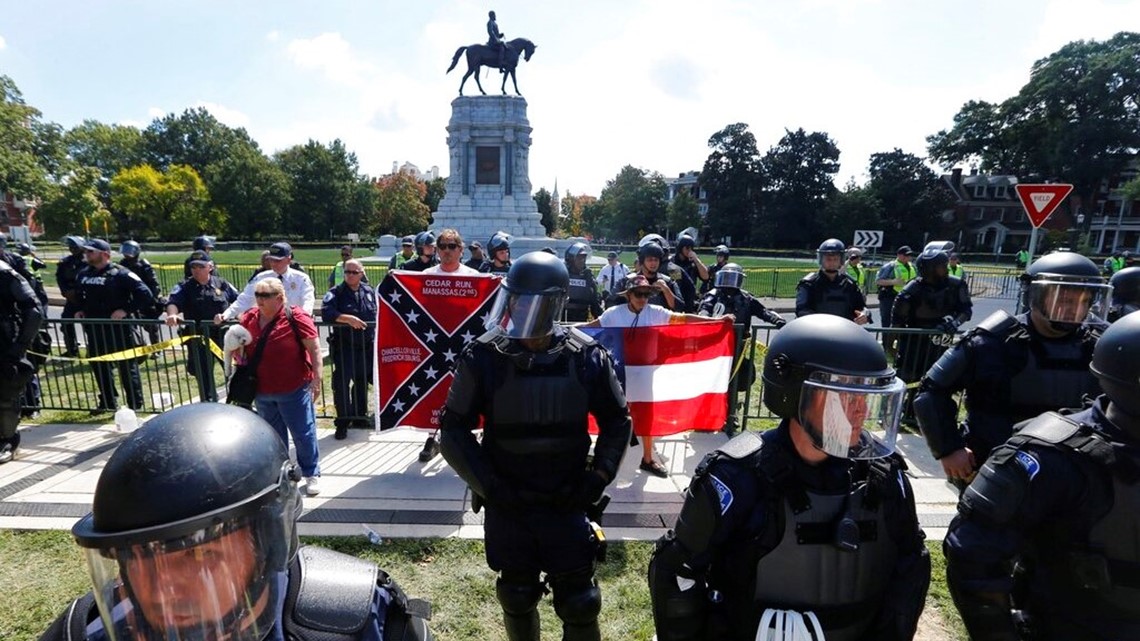
A few days after the Charlottesville rally, protesters sprayed red paint on Atlanta's Peace Monument. Statues in other cities have also been vandalized in recent years.
One hope in Atlanta is that adding context in the form of the markers "will take some of the oxygen — the accelerant — out of the room" and make it less likely that statues will be vandalized, Hale said.
Another of the new Atlanta markers will be placed near a monument erected in 1935 to commemorate the Battle of Peachtree Creek. It notes that the statue's inscription describes the U.S. after the Civil War as "a perfected nation."
"This ignores the segregation and disenfranchisement of African Americans and others that still existed in 1935," the marker states.
Other Atlanta markers will be placed near two monuments in the city's historic Oakland Cemetery: The "Lion of Atlanta" monument and the Confederate Obelisk.
The Atlanta History Center has developed a Confederate Monument Interpretation Guide to add historical perspective to such statues, Hale said. He's hoping Atlanta's efforts to add context can be used to guide other communities as they decide what to do with their own monuments.
"I think in a lot of cases once people see the power of contextualization, some people might decide they'd like to keep them there as a way to show how far we've come, or the journey that we've had, and explain what was going on at the time they were erected," Hale said.

